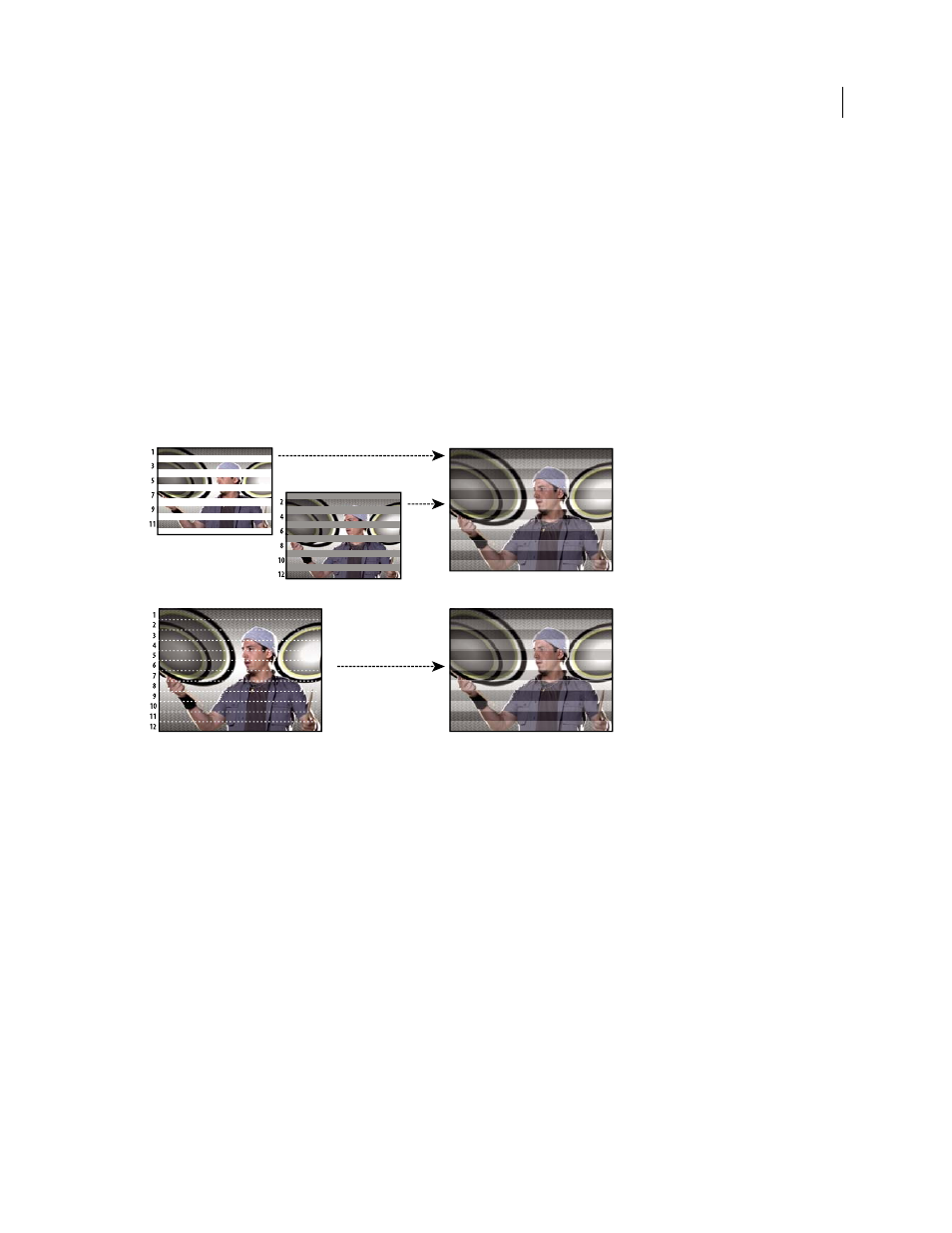Adobe After Effects CS4 User Manual
Page 98

92
USING AFTER EFFECTS CS4
Importing and managing footage items
Last updated 12/21/2009
Interlaced video, noninterlaced video, and progressive scanning
Interlacing is a technique developed for transmitting television signals using limited bandwidth. In an interlaced
system, only half the number of horizontal lines for each frame of video are transmitted at a time. Because of the speed
of transmission, the afterglow of displays, and the persistence of vision, the viewer perceives each frame in full
resolution. All of the analog television standards use interlacing. Digital television standards include both interlaced
and noninterlaced varieties. Typically, interlaced signals are generated from interlaced scanning, whereas
noninterlaced signals are generated from progressive scanning.
Each interlaced video frame consists of two fields. Each field contains half the number of horizontal lines in the frame;
the upper field (or Field 1) contains the odd-numbered lines, and the lower field (or Field 2) contains the even-
numbered lines. An interlaced video monitor displays each frame by first drawing all of the lines in one field and then
drawing all of the lines in the other field. Field order specifies which field is drawn first. In NTSC video, new fields are
drawn to the screen approximately 60 times per second, corresponding to a frame rate of approximately 30 frames per
second.
Interlaced scanning of interlaced video fields compared with progressive scanning of noninterlaced video frame.
A. For interlaced video, entire upper field (odd-numbered lines) is drawn to screen first, from top to bottom, in one pass. B. Next, entire lower
field (even-numbered lines) is drawn to screen, from top to bottom, in one pass. C. For noninterlaced video, entire frame (all lines in counting
order) is drawn to screen, from top to bottom, in one pass.
Noninterlaced video frames aren’t separated into fields. A progressive-scan monitor displays a noninterlaced video
frame by drawing all the horizontal lines, from top to bottom, in one pass. Computer monitors are almost all
progressive-scan monitors, and most video displayed on computer monitors is noninterlaced.
The terms progressive and noninterlaced are thus closely related and are often used interchangeably, but progressive
scanning refers to the recording or drawing of the scan lines by a camera or monitor, whereas noninterlaced refers to
the fact that the video data itself isn’t separated into fields.
.
Trish and Chris Meyer provide a variety of materials about interlacing, field order, field dominance, field rendering,
and separating fields:
•
•
•
article clarifying meanings of the terms field order and field dominance
•
video overview of fields and interlacing on the
A
B
C
